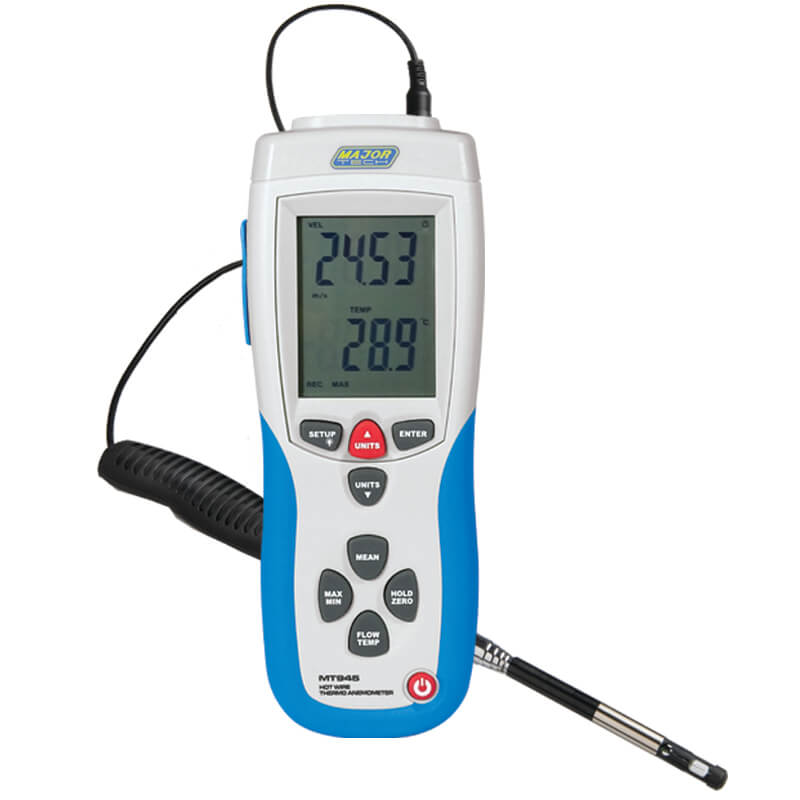All You Need to Understand About Anemometers: How They Work, Why They Issue, and Where to Use Them
Anemometers, though commonly forgotten in the realm of clinical tools, play an important function in various areas, providing useful understandings into wind rate and airflow patterns. As we delve right into the ins and outs of anemometer innovation, we will certainly uncover the internal workings of these tools, their importance, and the key considerations when picking the appropriate anemometer for specific applications.

Anemometer Basics
An important instrument made use of to gauge wind speed and direction, the anemometer plays a critical duty in meteorology and numerous sectors. An anemometer normally is composed of 3 or four mugs that rotate in the wind, a vane that points right into the wind, and sensing units to track the turnings or activities.
There are numerous types of anemometers readily available, including mug anemometers, vane anemometers, hot-wire anemometers, and sonic anemometers, each with its one-of-a-kind functions and applications. Mug anemometers are generally utilized for basic wind speed dimensions, while vane anemometers are preferred for directional dimensions. Hot-wire anemometers appropriate for low airspeeds, and sonic anemometers are suitable for high-precision measurements in research and commercial setups. Recognizing the fundamentals of anemometers is essential for exact wind information collection and evaluation throughout different sectors.
Concepts of Anemometer Operation
Building on the fundamental understanding of anemometer fundamentals, the concepts of anemometer operation clarify the technicians behind wind speed and direction dimensions. Mug anemometers, for instance, have 3 or even more mugs that catch the wind, causing them to rotate quicker as the wind speed increases. Hot-wire anemometers count on a warmed cable that cools down as wind passes over it, with the price of cooling establishing the wind speed.
Significance of Anemometers
The relevance of anemometers in meteorology and different sectors can not be overemphasized. Anemometers play a vital duty in determining wind speed and instructions, giving crucial data for weather condition forecasting, environment researches, ecological tracking, and aeronautics operations. Meteorologists rely upon anemometers to gather accurate wind information, assisting them comprehend climate patterns, anticipate tornados, and problem prompt cautions to the public. In sectors such as construction, agriculture, sustainable energy, and maritime operations, anemometers are utilized to optimize processes, ensure safety and security, and enhance performance. Wind farm operators utilize anemometers to analyze wind conditions and make the most of electrical power manufacturing from wind turbines. In the maritime field, anemometers help ship navigation by giving real-time wind details to captains, aiding them make notified choices to guarantee safe voyages. In general, anemometers are essential tools that add considerably to safety, effectiveness, and educated decision-making in meteorology and a vast array of industries.
Applications Throughout Different Industries
Applications of anemometers span throughout varied sectors, showcasing their convenience and utility beyond meteorology. In the Find Out More sustainable energy sector, anemometers play a crucial function in assessing wind problems for wind ranch placements, guaranteeing ideal energy manufacturing. Industries like construction and mining use anemometers to keep track of wind speeds, vital for safety protocols, especially when operating at elevations or in open-pit mines where solid winds can present threats. Anemometers are additionally integral in the air travel sector, aiding pilots in understanding airspeed and wind direction for secure liftoffs and touchdowns. The maritime industry benefits from anemometers for ship navigation, helping sailors prepare for climate modifications and readjust paths appropriately. In agriculture, anemometers aid farmers in managing crop splashing by supplying real-time information on wind speed to stay clear of drift. Anemometers locate applications in HVAC systems to maximize airflow and enhance energy efficiency in structures. The varied use instances of anemometers emphasize their relevance across different industries, highlighting their vital function in enhancing functional safety and security and performance (anemometer).

Picking the Right Anemometer for Your Requirements
For basic functions, a mug anemometer is suitable for determining wind speed, while a vane anemometer provides wind direction information. Hot-wire anemometers are excellent for low airspeed dimensions, and ultrasonic anemometers provide high precision and sturdiness.

Verdict
Finally, anemometers play a critical role in measuring wind speed and direction across numerous markets. Comprehending the concepts of anemometer procedure is essential for choosing the right gadget for particular needs. From meteorology to air travel, anemometers are important tools for making sure and accumulating precise data safety in various applications. It is very important to take into consideration the value of anemometers in order to make educated choices when choosing the most suitable device for measuring wind conditions.
There are numerous kinds of anemometers offered, including mug anemometers, vane anemometers, hot-wire anemometers, and sonic anemometers, each with its unique features and applications. Mug anemometers are generally used for standard wind speed dimensions, while find more vane anemometers are preferred for directional measurements. Hot-wire anemometers are suitable for low airspeeds, and sonic anemometers are suitable for high-precision measurements in study and commercial setups.Building on the fundamental understanding of anemometer fundamentals, the principles of anemometer procedure illuminate the auto mechanics behind wind speed and direction dimensions. For general functions, a cup anemometer is ideal for measuring wind speed, while a vane anemometer supplies wind direction information.